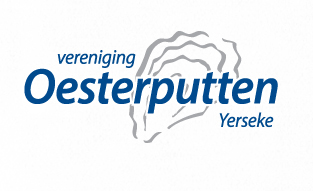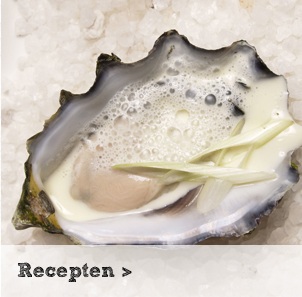The wells #14 of Groeninx Zoelen and Pompe van Meerdervoort, built in 1874 for the price of Fl. 22,696
Genesis
Oysters are widely appreciated and sought after delicacies. The clams are found in the wild, fished and collected. Because it could not guarantee predictable supply were looking for a more regulated oyster catch. What therefore meant that there had to be farmed oysters. About 3000 years ago the Chinese were the first to successfully mastered the breeding process. What started nearer the Romans around 100 BC. with oyster cultivation in artificial oyster beds and basins.
In the course of time this process disappeared into oblivion, to be again. Discovered by the French Until that time, there could be free and unregulated fishing for oysters, which were more than enough. However, measures were taken in 1760 to regulate overfishing and stimulate. Cultivation by overfishing, and the big question of the French court
About 1850 in France was the necessary knowledge to come. A productive crop
The French success had not gone unnoticed in the Netherlands. The Dutch men Baron Groeninx of Zoelen and Esquire Pompe van Meerdervoort wanted to try their luck in oyster farming. After a study came to the conclusion that there were opportunities for oyster wells French model to the Zeeland waters. In the Oosterschelde, the conditions were in fact very suitable for the wild oyster due to the solid soil, clean water, water temperature, salinity proper and sufficient food.
The first Oyster Wells
In 1873 the first plans were made for the construction of the innerbank oyster ponds. Esquire Pompe van Meerdervoort was the initiator, a few months later by Baron Groeninx of Zoelen.
However, around 1871 the firm de Groot and Bolier build the first one outside the dikes. It used pans for oyster breeding and oysters were stored for the winter to protect them against storm and cold.
After the success of the first wells of Meerdervoort complex of Esquire and Baron Groeninx of Zoelen called pit 12 was in 1875 wells of Hamelin landscaped called pit 14.
The construction of a third complex wells in 1883, the two existing complexes called pit 13, brought along two little harbour basin on either side of the centre wells.
The wells #13 of Verwijs, built in 1883
The growth of Oyster culture
The explosive growth of the oyster culture Yerseke grew enormously. To maintain contact with clients and be able to receive these arose in 1877 a large post office and hotel "The Oesterbeurs" was built.
Following a rapid growth in 1885 was followed by a big crash, a huge oversupply and speculation rental prices were great losses and went bankrupt a few large companies. Around this period shifted the economic focus of the oysters to the mussel. The oyster market place thus came to small family businesses.
The oyster farming insights changed, leading to the current use of the wells. Consumption mature oysters are approximately 4-year general audiences
d fished out of the waters of the Oosterschelde and Grevelingen. Then the oysters are placed in the oyster ponds to rest them and get rid of sand and mud. In addition, they recover from damage that occurred during fishing the mussels.
By species, they are waiting until they are packaged and sold.
The Pilots around the oyster ponds date from around 1870 and are in the possession of the oyster farmers. Here, the oysters are sorted.
The winter of 1962-1963
In the winter of 1962-1963 almost the entire oyster population froze to death. There was huge damage and many oyster farmers were forced to stop. After this great mortality of oysters were imported from France. And with this import oysters came in the year 1979, the parasite Bonamiasis Ostrea within the Oosterschelde. The oysters are susceptible to this parasite, which was again a part of the oyster population lost. As a result, the Japanese oyster and Portuguese was introduced in the Netherlands. The Japanese variant appeared to thrive in the Oosterschelde well. The oysters planted en masse on, thus producing increased. Moreover, this oyster of a very good quality turned out to be rather sensitive to Bonamiasis. Meanwhile, the Japanese oyster completely adapted to the Oosterschelde. Breeders have developed their own culture methods. So we can truly say that they are 'Zeeuwse' oysters.
Wells #12 of Harmelen, built in 1875.
Oysters
In Zeeland there are two types of oysters: the Zeeuwse Platte and the Zeeuwse Creuse. The only similarity between these two is that they both oysters are grown in the Grevelingen and in the Oosterschelde
The oysters are controlled by tapping them together. Sounds oyster den, she is not edible. The oysters are packed together as closely as possible in order to prevent them from getting open. The oyster is a blanket of seaweed placed to counter. Possible shifts of the oysters In New Zealand we call it "indexes". All this is still done by hand
Zeeuwse Platte
Zeeland flat, le Platte, Belon flat oyster or native oyster are other names for the oyster. The Zeeland flat oyster has the most exquisite taste among the oysters. This flavor slowly unfolds because this oyster is just ripe for consumption after 5 to 6 years. She has a round smooth shell, of which the sizes in zeros is referred to (1/0, 2/0, 3/0, 4/0, 5/0). The oyster is a rare delicacy because it is driven. The rapidly growing Zeeland Creuse In addition, the flat oyster plant is harder on. They are available in the period from September to June.
Zeeuwse Creuse
The Creuse is also called convex, concave, wild, Japanese or Portuguese oyster. This oyster feels very much at home in the Dutch waters and due to its much shorter reproductive cycle (2 to 3 years) may in large quantities are grown. Unlike the Zeeland oyster has the Zeeland Creuse a deep bowl and a much more erratic shaped exterior. The sizes of the hollow oysters are indicated by Roman numerals (I, II, III).
How do I open an oyster?
Step 1: Hold the oyster with one hand between a folded towel so that the flat shell sits above.
Step 2: Insert with an oyster knife or a sharp knife securely in the hinge between the two shell halves. Carefully pry the knife in and make a short twisting motion open the shell.
Step 3: Cut the upper and lower shell along the gap of each other loosely. Hold the oyster estate law to prevent the moisture runs out, but do not put too much force on the oyster.
Step 4: Remove the flat shell and cut the oysters in the oyster convex loose. Remove any debris away.
Difficulty with opening?
Is it open oysters stabbing a little difficult, steam the oysters even open. Place the oysters in a steamer basket and let them steam for about 4 minutes. You can also create a colander over a layer of water suspended in a closed pan. The oysters are a bit open and are easy to open stabbing. The open steamed 'oysters are ideal for baking.







